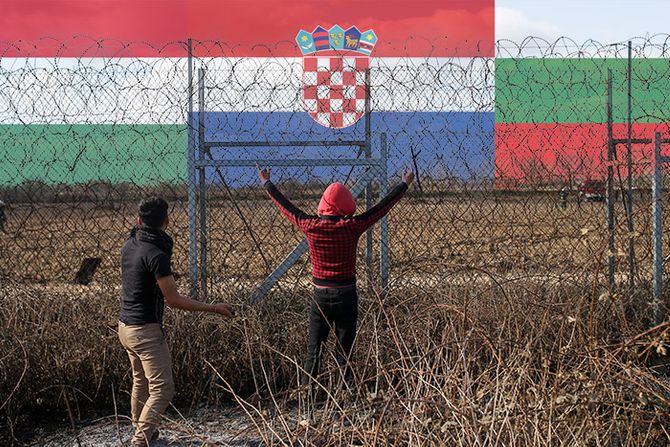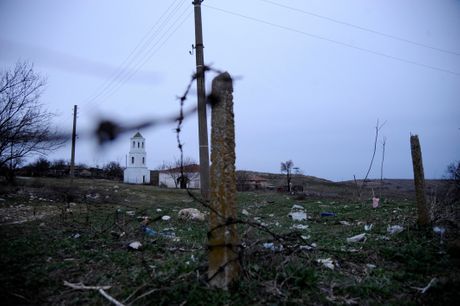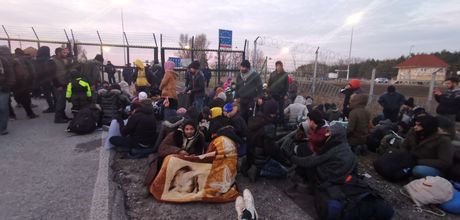
What needs to happen to close the border to migrants: This is what regional countries did
Serbian President Aleksandar Vucic's recent statement that it would take only 12 hours for Serbia to close its borders if the situation with migrants spiraled out of control, couldn't but take us five years back when similar moves were made by countries in Serbia's surroundings.
Bulgaria, Hungary and Croatia could not withstand the influx of refugees at the time, so they closed their borders.
First, Bulgaria tightened control of its border by installing a steel fence and infrared cameras, then Hungary built a fence without sparing any costs, followed by Croatia, which closed its border with Serbia in September 2015.
Aleksandar Vucic said that if the migrant wave that is talked about so much moves towards Serbia and in any way threatens the safety of our people, the border can be closed.
"If anything starts that might endanger the safety of our people, we will consult with our neighbors and do whatever is necessary to protect people. We will take measures. We are ready at all times to preserve national security and safety of our citizens. If necessary, we will close our border," said Vucic.
Although the European political establishment had welcomed migrants with a dose of empathy, over time, their attitude becaem the subject of intense criticism by a portion of European public.
Concerned about the added burden of welfare services, the deterioration of the security situation, and the possible disappearance of Europe's Christian identity due to the mass arrival of Muslims, some countries decided to close their borders.
This is how countries in the region defended themselves against illegal migrants in 2015:
Bulgaria: Steel fence and infrared cameras
In August 2015, Bulgaria strengthened its border with Turkey by building a steel fence along the entire border, which the authorities at the time said was untouchable. At the same time, local authorities, as they stated at the time, hoped to stop criminal gangs that exploited families fleeing from wars.

Next, infrared cameras were installed to detect movement of bodies, while the fence was monitored constantly and guarded by armed guards at strategic points along the entire 80 kilometers of the border. In addition, border police monitored developments across the border in Turkey from watchtowers.
Hungary: Barbed wire
In an attempt to stop the crossing of migrants from Serbia, Hungary took stronger measures than Bulgaria. In July 2015, Hungarian parliament passed a law tightening asylum rules and providing a legal basis for erecting a fence along the border with Serbia. Parliament approved the use of 10 meters of space within the external borders of EU's Schengen zone to ensure a rapid construction of the border wall.

The law shortened the screening period for asylum seekers, and allowed Budapest to reject asylum applications of those arriving from Sri Lanka, Afghanistan or Iraq. The Hungarian government allocated 21 million euros towards the building the fence.
The Hungarian army soon began to build the fence on the outskirts of the city of Morahalom.
Despite the barbed wire and the wall that Hungary built on the border with Serbia, that is over 170 kilometers long, refugees were crossing into country near the village of Roszke, so the railroad crossing on the Serbian-Hungarian border used by refugees to enter the country was also shut down. Barbed wire was placed on the railroad passage as well as containers wrapped completely in barbed wire.
Croatia: State roads along the border closed
From the Hungarian-Serbian border, the main wave of refugees from the Middle East "moved" towards Croatia. In September 2015, Croatia closed all border crossings with Serbia, the Croatian Ministry of the Interior announced at the time. The neighboring state decided on this move after more than 11,000 refugees entered its territory in a short amount of time.
"Border crossings Ilok, Ilok 2, Principovac, Principovac 2, Tovarnik, Erdut and Batina are closed for all traffic due to the increased influx of migrants," the Croatian Automobile Club (HAK) announced at the time.
At that time, several state roads along the border with Serbia were also shut down.
The border was opened after less than a month, when refugees were allowed to cross in smaller groups.
(A. Tomovic/a.tomovic@telegraf.rs)
Video: Tea Tairovic zapalila Dubai nastupom
Telegraf.rs zadržava sva prava nad sadržajem. Za preuzimanje sadržaja pogledajte uputstva na stranici Uslovi korišćenja.

